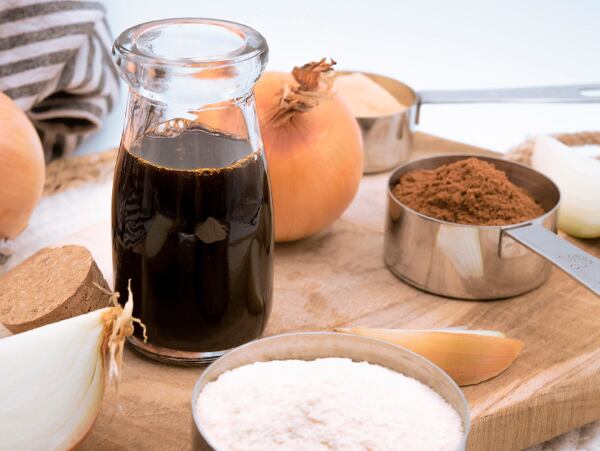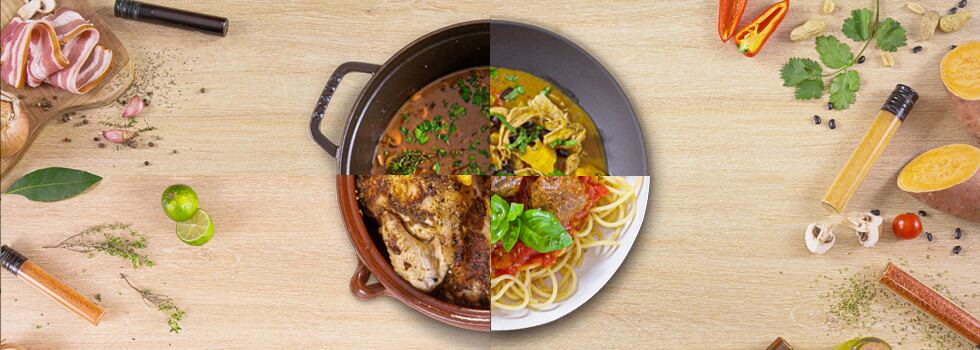In today’s food marketplace, there are undeniable forces at work among consumers. They demand products that are natural and feature clean labels. They have a strong desire for authenticity in their purchases. They want ingredient traceability and sustainability. And perhaps most importantly, they want to replicate the emotional and sensorial experiences associated with home cooking regardless of where, when and how the consumption is taking place.
There is no segment of the industry where this is more true than in culinary ingredients. The very nature of the concept – the word culinary is defined as “of or related to the kitchen” – suggests the importance of homemade. Whether used by chefs, beginner cooks, or anyone in between, culinary ingredients need to provide the taste and familiarity of home and all its goodness.
Sustainably sourcing the best of nature
Strength in culinary must begin right at the source. At Diana Food, we believe that only by selecting and growing the absolute best that nature has to offer can a company expect to deliver culinary ingredients that meet and often exceed consumer expectations. We like to say that culinary is in our DNA. It’s embedded in our history and we’ve become backwards integrated in the core elements of culinary.
Acquiring expertise in sourcing is not something that happens quickly or easily. It requires experience, a deep pool of supplier partners, a lengthy collection of quality controls, traceability that spans the entire cultivation process, and strict control and monitoring of contaminants. Managing consumer-driven certifications and guarantees such as organic, animal welfare, Fair-Trade and non-GMO is also vital to sourcing of culinary ingredients. Meeting these standards is critical to satisfying the needs of consumers all over the world.
Ensuring optimal performance through agronomy
Leadership in sourcing also includes a commitment to agronomy. The role of the agronomist in an ingredient supplier cannot be understated. Diana Food staffs a global team of in-house agronomists who are responsible for assuring that in partnership with growers, performance and sustainability are delivered. They explore all the best varieties of each region to identify preferred species, conduct varietal screenings and non-GMO genetics to breed exclusive varieties that meet specific performance parameters, and understand how to trigger the harvest and exactly the right time to ensure peak quality.
Knowledge of terroir is also key, since different soils can maximize growing conditions and impact flavor. Working in partnership with farmers, the agronomist can ensure that the crops reach optimal performance, meet the targeted functionality, and are available in the required quantities.
Replicating the taste of home with kitchen-like processing
Vital though it is, growing and breeding the best raw materials is only part of the equation when it comes to culinary excellence. Once the production process begins, the inherent goodness of the raw materials can be reduced or even destroyed if the production methodologies are too harsh. Diana Food utilizes gentle, clean and kitchen-like processes such as water extraction, concentration and drying. For some ingredients, Diana Food replicates kitchen techniques such as blanching, poaching, boiling, steaming, sautéing, pan frying, sweating, and more. Industrial-scale vessels allow us to reproduce these kitchen techniques on a commercial scale.
Chefs have a role in this process as well, since we rely on a global network of creative chefs to provide culinary insights specific to their region and specialty. They are often the source of the gold standard recipe; the ultimate target for prototyping. This creative approach to processing is the key to producing authentic, chef-inspired taste profiles.

From seed to fork
Ultimately, the goal of the manufacturer is to deliver trust to the customer from “seed to fork.” This is achieved by expertly combining the features just discussed – sourcing, agronomy, and gentle processing – with innovative research programs, adoption of high safety standards, sensory testing, applications expertise, clinical data for health claims, regulatory support, and labelling declarations. Food companies that feature culinary ingredients should be partnering with an ingredient supplier like Diana Food that has a successful track record of delivering the complete package of seed to fork capabilities for their customers.
Product streams that support consumers’ wants and needs
The portfolio of culinary ingredients available to a food processor can be likened to the shopping list for a trip to the farmer’s market, on a grand scale. That’s why Diana Food constructed its culinary product streams into four major collections: vegetables, fruits, meats, and wines and vinegars. Within those collections, solutions are offered in multiple forms including broths and juice concentrates, fats, powders, flakes, crunchies and pastes. This gives product development professionals all the options they might need. Consider soups as an example. The majority of the ingredients in a soup formulation – bone broth, onion, carrot, celery – are all available from within the Diana Food culinary streams.
Within streams, it’s important to offer a variety of product types to ensure authentic culinary taste across applications. The taste profile of sauteed mushroom differs from that of blanched or poached mushroom, so Diana Food offers specific mushroom concentrates for all three. Likewise, the application may call for a powder rather than a concentrate, or for the ingredient to be organic. A culinary ingredient supplier should be able to address all these variations for its customers. Over the years, Diana Food has built a toolbox of opportunities in culinary featuring products with fresh and authentic notes, delicate notes from gentle cooking, and culinary accents from traditional cooking methods. In onion alone there are more than a dozen varieties; in chicken more than thirty.
Applications: Where it all comes together
Of course, the story isn’t complete without a look at how all of this comes together. Every project has a unique target/taste profile. While the ingredients might be perfectly suited to meet that profile, they still need to come to life in the final application. Often, there are additional challenges related to texture, compatibility with other ingredients, final processing methods, or label requirements. This is where in-house chefs, applications experts and sensory teams come into play. They have the expertise to make sure the targeted performance is delivered in your application, no matter the technical or regulatory challenge.
Delivering the Holy Grail of authenticity
Diana Food knows that the road to culinary authenticity and excellence is clear: robust know-how in sustainable sourcing, expertise in agronomy, gentle and kitchen-like processing, deep and high-performing product streams, and strong support in applications, regulatory and quality. When all those are achieved, the result is the Holy Grail of the food industry: intense, fresh, authentic tastes made from natural, simple ingredients in kitchen-like processes


